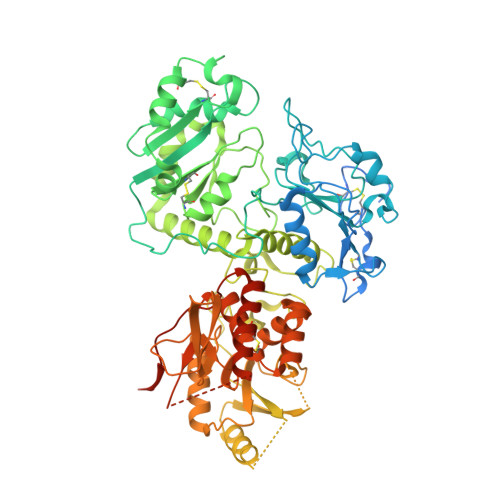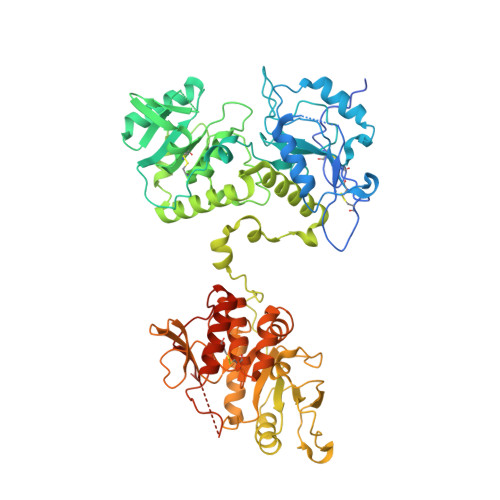Structural basis for heparan sulfate co-polymerase action by the EXT1-2 complex.
Li, H., Chapla, D., Amos, R.A., Ramiah, A., Moremen, K.W., Li, H.(2023) Nat Chem Biol 19: 565-574
- PubMed: 36593275
- DOI: https://doi.org/10.1038/s41589-022-01220-2
- Primary Citation of Related Structures:
7SCH, 7SCJ, 7SCK, 7UQX, 7UQY - PubMed Abstract:
Heparan sulfate (HS) proteoglycans are extended (-GlcAβ1,4GlcNAcα1,4-) n co-polymers containing decorations of sulfation and epimerization that are linked to cell surface and extracellular matrix proteins. In mammals, HS repeat units are extended by an obligate heterocomplex of two exostosin family members, EXT1 and EXT2, where each protein monomer contains distinct GT47 (GT-B fold) and GT64 (GT-A fold) glycosyltransferase domains. In this study, we generated human EXT1-EXT2 (EXT1-2) as a functional heterocomplex and determined its structure in the presence of bound donor and acceptor substrates. Structural data and enzyme activity of catalytic site mutants demonstrate that only two of the four glycosyltransferase domains are major contributors to co-polymer syntheses: the EXT1 GT-B fold β1,4GlcA transferase domain and the EXT2 GT-A fold α1,4GlcNAc transferase domain. The two catalytic sites are over 90 Å apart, indicating that HS is synthesized by a dissociative process that involves a single catalytic site on each monomer.
- Department of Structural Biology, Van Andel Institute, Grand Rapids, MI, USA.
Organizational Affiliation:



















